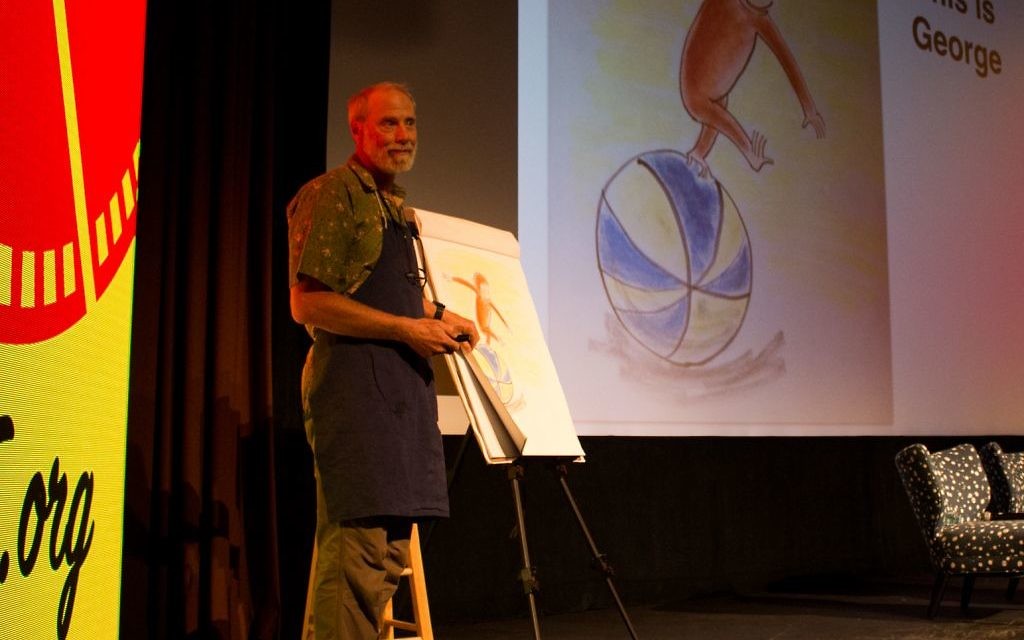The Resilience of Curious George’s Creators
An AJFF Selects screening raises comparisons between Margret and Hans Rey and modern refugees.

A married Jewish couple from Germany who fled persecution in Europe and created a best-selling series of children’s books is the subject of a new documentary by a young Japanese filmmaker.
“Monkey Business: The Adventures of Curious George’s Creators” was screened by the Atlanta Jewish Film Festival as its monthly AJFF Selects film Monday, Aug. 14, at SCADshow in Midtown with director Ema Ryan Yamazaki in attendance. A Kickstarter campaign financed her project, which took three years to complete and involved extensive research at the University of Southern Mississippi, where archives of authors Hans and Margret Rey are kept.
The Curious George books, first published in 1941, have sold more than 30 million copies in 25 languages.
Get The AJT Newsletter by email and never miss our top stories Free Sign Up
The Reys were living in Paris during the emergence of Nazism and managed to escape just before German forces seized the city in 1940. Traveling south chaotically on bicycles cobbled together by Hans from spare parts, the pair found a train that took them through the rest of France, into Spain and on to Portugal. They found passage on a ship from Lisbon to Rio de Janeiro and eventually wound up in New York.
In their possession all the while was a manuscript about an impetuous simian that had received positive reaction from potential publishers in Paris but had yet to be developed.
They described their arduous journey as an “adventure,” Yamazaki said. “They just seemed to have that outlook. Margret describes Curious George as this monkey who keeps getting into trouble and then gets himself out of it. I think your art is a product of who you are and your life experiences.”
Narrated by actor Sam Waterston, the film traces the evolution of the couple’s journey from war refugees in Europe to successful authors in the United States. It incorporates interviews with war footage specific to June 1940 and inserts animation from illustrator Nat Scrimshaw, who draws in Hans’ style.
Scrimshaw, the former director of the Margret and H.A. Rey Center in New Hampshire, was at the screening. As a child, he was a neighbor to the Reys in Cambridge, Mass.
“I first knew him as the magical creator of Curious George, but as I got older, we talked about the energy crisis and the environment and about Vietnam, which he was very concerned about, and his experiences in war,” Scrimshaw said. “From the moment I met Hans, I wanted to draw, and I did. He inspired me.”
Yamazaki added: “I’ve been inspired by them too, and I really think all of us can benefit a bit from the Reys. I just want to be as good a storyteller as them. This wasn’t planned, but while I was making the film, the world changed a bit, and so did America.”
She said it’s a coincidence that the documentary is coming out at a time when U.S. policies on refugees and immigrants are in the news. “The story is relevant now in terms of resilient people throughout time, also for myself as a recent immigrant to this country. We would not have Curious George if the U.S. had not let them in. So many things we have now were built by strong people who came here from abroad, who lived through it all.”
“Monkey Business” (curiousgeorgedocumentary.com) is available through on-demand and streaming services.




comments